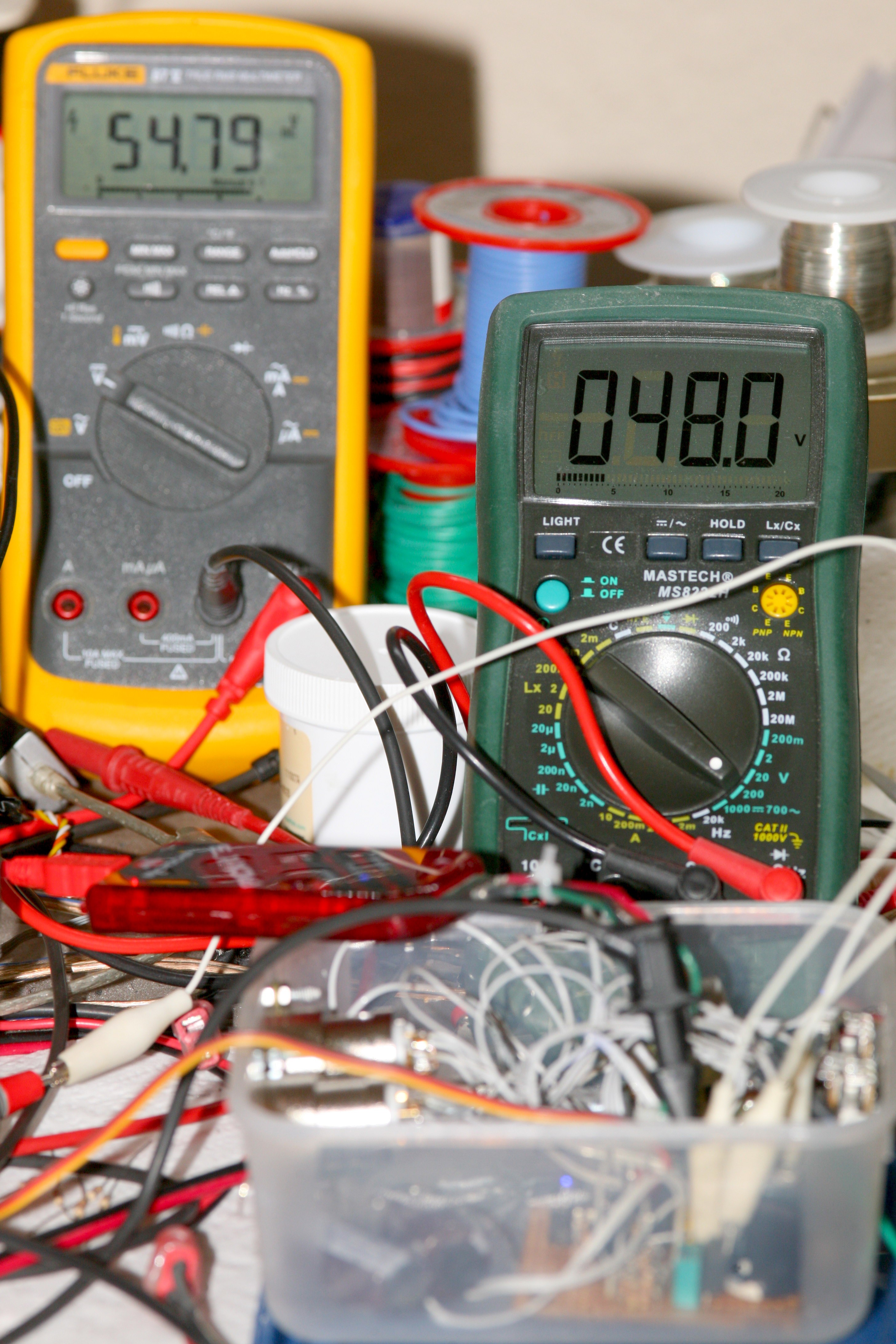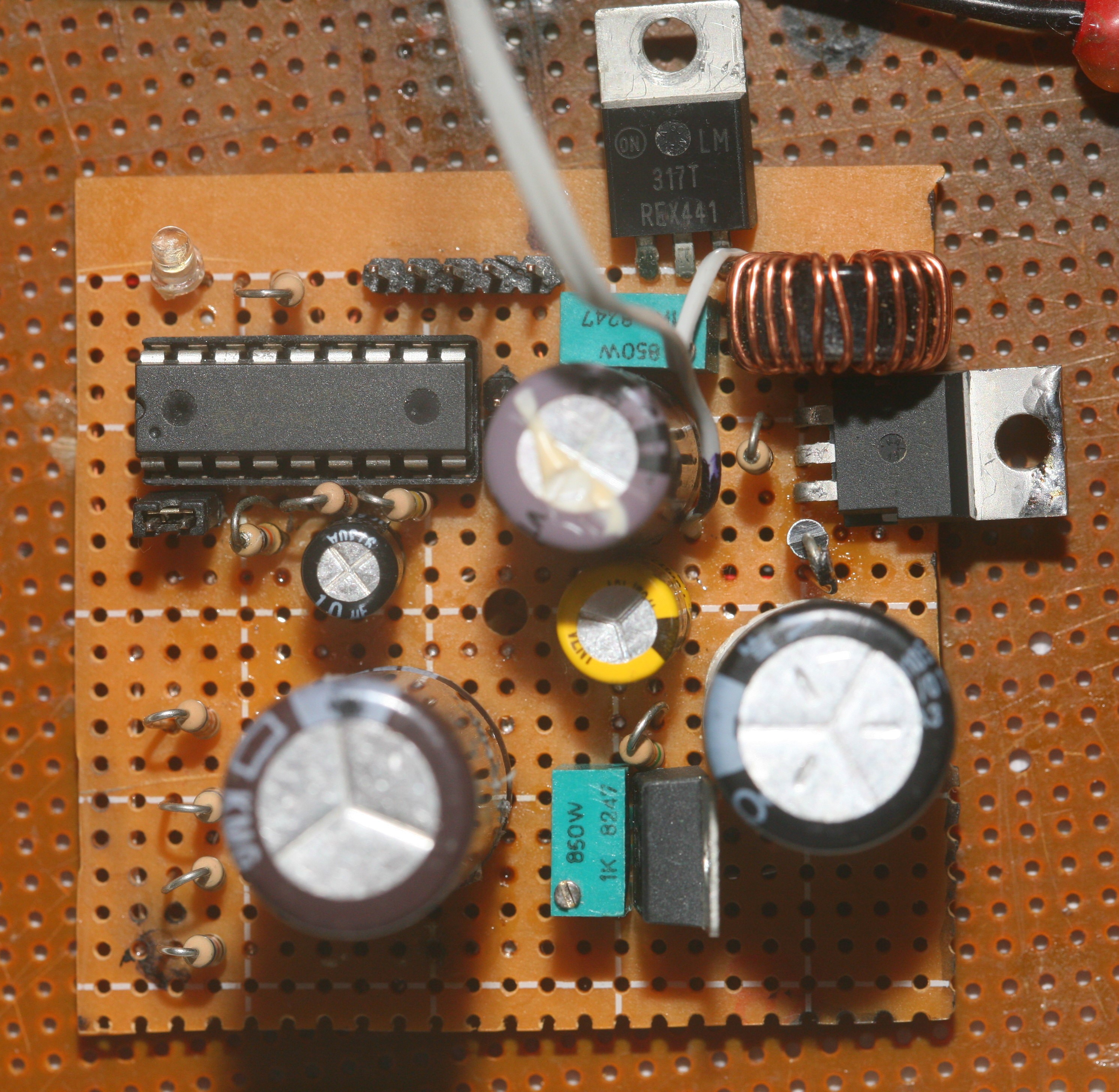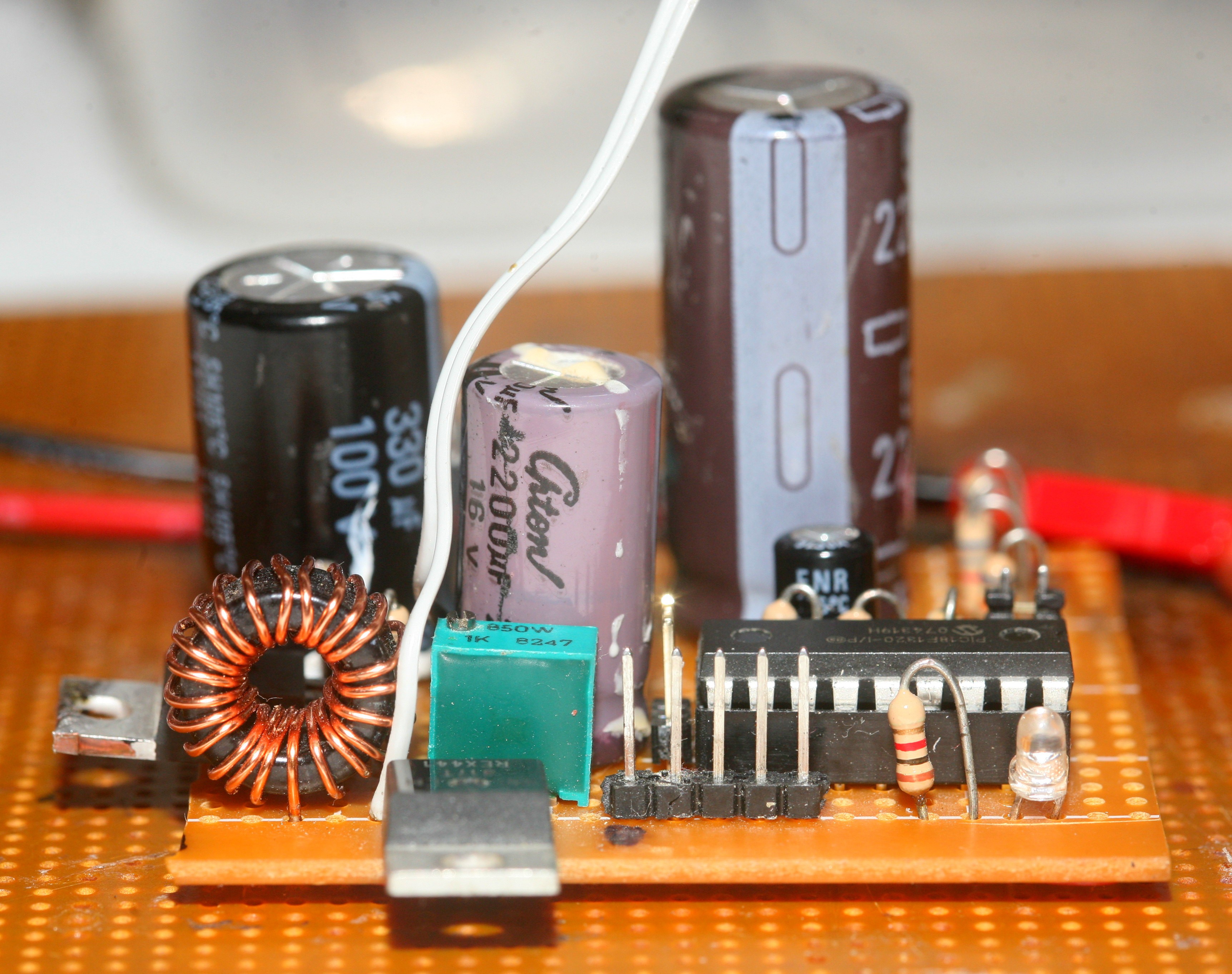
Got the linear regulator to work, initially. The 54V directly from the boost converter can be seen getting converted to 48V. Used a 15k & adjustable 1k for the 48V regulator. They provide the required 3mA load without burning up.


Next came optimizations to provide enough current to the regulator & reduce the noise. The new phantom power board was quite an improvement over the original. All the capacitors which used to be on breakout wires managed to fit on the board. The network of dozens of 10k & 1.7k resistors was replaced by 4 6.8k resistors. The diode was replaced with a shottky. A small resistor to limit current in drain was removed. It's much more efficient. The key enablers were a current limited power supply & oscilloscope.
Every effort was taken to star ground, though there wasn't enough room to get it ideal. The mane concern is separating the linear regulator ground from all oscillating parts. Added a serial port for debugging. The original was debugged without a serial port. The firmware was moved from assembly to C because the algorithm needed tweeking for the higher efficiency.
The original algorithm was an ingenious design to let the voltage swing from 46-50, trimming the duty cycle only when it hit a boundary. Since the biggest source of noise isn't absolute voltage but changes in duty cycle, it was focused more on manetaining a constant duty cycle than an accurate voltage.
Increased the voltage swing to 52-60V. Fired it up & the linear regulator output was now following the boost converter output. A quick test outside the circuit revealed it was the 1st bad regulator in 20 years of soldering regulators.
We have a 0-1k R1 & a 15k R2. The maximum voltage setting is 15k/0 * 1.25 or infinity. The minimum is 15k/1k * 1.25 or 18.75V. The only conceivable fault was if it was set to 18.75V & the boost converter put out 60V, it would just barely exceed the 40V rating. The other way it can exceed 40V is if the output is shorted. It should never short in casual use, since all the outputs have 6.8k's. The thermal protection of the LM317 is legendary, but lesser known is the lack of any over voltage protection. The easiest solution is to add a parallel R2 so it doesn't go above 500 ohms.
 lion mclionhead
lion mclionhead
Discussions
Become a Hackaday.io Member
Create an account to leave a comment. Already have an account? Log In.